The transportation sector significantly contributes to global CO2 emissions, with passenger vehicles accounting for a significant share. In light of this, the decarbonization of mobility is of utmost importance, and the adoption of electric vehicles has emerged as a rapidly growing technology to address this concern.
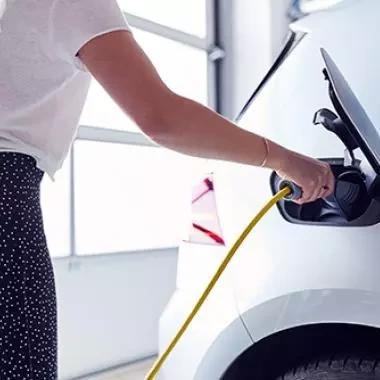
Image Credit: Saint-Gobain Tape Solutions
Significant strides have been achieved in battery technology, specifically regarding the range, energy density, and safety of batteries. These advancements have played a vital role in mitigating electric vehicles’ obstacles.
A significant hurdle for electric vehicles (EVs) lies beyond the confines of the vehicle. To facilitate the broad acceptance of EVs, customers and fleets must have access to a resilient charging station infrastructure.
To extend the reach of dependable charging stations, considerable investment is necessary. Various methods are available to augment the charging infrastructure's efficacy, with the assistance of specialized foams and adhesive tapes.
Reducing the Need to Charge
To tackle the charging network's demand, the initial action is to enhance the battery pack's efficiency. Foams and tapes can play a pivotal role in increasing the power density of battery packs, whether within the vehicle or the supporting Battery Energy Storage Systems (BESS).
The compression pads Saint Gobain offers manifest CFD curves, which aid in refining the pressure exerted on cells during charging and discharging cycles, resulting in superior cell performance.
They assist in prolonging battery life by minimizing the cells' relative motion in case of shock or vibration, enhancing electrical insulation, and thwarting arcing within the modules.
Top-notch thermal runaway protection materials blend thermal insulation with fire-blocking attributes and exceptional compression set resistance, serving a dual function of mitigating fires and functioning as a compression pad in lithium-ion batteries.
In conjunction with thermal interface materials, cushioning pads, and pack seal gasketing solutions, contemporary battery packs can achieve greater distances and enhance loading cycles, culminating in curtailed and more efficient charging requirements.
Power-Up EV Charging
Significant potential exists to optimize EV charging through the vehicle battery and its constituents. However, it is worth examining how tapes can be utilized to optimize the charging infrastructure and its components to meet the escalating demand for powering electric vehicles.
The efficiency and performance of various systems, including renewable energy production and BESS, can be significantly improved using specially designed foams and tapes.
A closer examination of battery charging components such as wall boxes, charging stations, and home plugs reveal that using these materials can provide additional benefits by enhancing the safety, speed, and efficiency of the charging process.
A Closer Look at Electric Vehicle Supply Equipment (EVSE)
EVSE refers to the equipment utilized for charging electric vehicle batteries, which can include various types of equipment that are installed at station locations. A station location is a site with one or more EVSE ports located at the same address, such as a hotel, shopping plaza, or parking garage.
The housing unit for EVSE ports is often referred to as a charging post or column, which can contain multiple EVSE ports.
Each EVSE port is designed to provide power to charge a single vehicle at a time, although it may feature multiple connectors and plug types (such as CHAdeMO or CCS).
The connector is ultimately plugged into a vehicle to initiate the charging process.
Difference Between Alternating Current (AC) and Direct Current (DC) Charging
Power supplied from the grid is always in AC form, whereas batteries require DC power. The primary distinction between AC and DC charging lies in where the power is converted, inside or outside the vehicle.
AC charging offers different levels of charging, ranging from slow (Level 1: 3 to 7 kW, taking 8-10 hours to charge), which is typically used for residential purposes, to fast (Level 2: up to 19.2 kW in the USA, or up to 43 kW in Europe, taking 4-6 hours to charge), suitable for residential or commercial use.
DC charging is categorized as Level 3 and is commonly called DC Fast Charging.
In AC charging, the vehicle’s onboard charger (OBC) converts AC power to DC, while DC charging stations have internal conversion capabilities that allow power to be supplied directly to the battery, resulting in faster charging times of less than 30 minutes.
DC charging stations are typically more expensive than AC charging stations due to their higher power output and are primarily intended for commercial use with more demanding requirements, such as high voltage or specific environmental conditions.
Fast Charging Requires High-Performance Solutions
Compared to refueling combustion engine vehicles, charging battery electric vehicles takes considerably longer, posing one of the significant challenges to their widespread adoption. Engineers around the world are making efforts to reduce charging times.
Although higher power is crucial for faster charging, it generates significant heat and stress on batteries and components.
Thermal Interface Material Solutions
Sensitive electronic power modules and electrical components within charging stations require robust protection from environmental factors, mechanical damage, and heat. Adequate shielding is necessary to ensure the proper functioning of these components.
Gap pads or ThermaCool® TC Series silicone pads, which are thermal interface materials, possess a UL94 V-0 rating and provide superior electrical isolation. These materials effectively dissipate heat from the system, resulting in increased safety and protection of sensitive components from overheating.
The extended lifespan of these components is also ensured due to their effective heat dissipation.
ThermaCool R10404 is a thermally conductive closed-cell silicone sponge rubber that offers high thermal conductivity, exceptional electrical isolation, and impressive compression set resistance (vibration absorption). Its distinctive attributes make it a perfect gap filler for heat transfer applications sensitive to vibrations.
ThermaCool TR3, a thermally conductive transfer adhesive, can be utilized as an alternative to mechanical fasteners for bonding heat sinks to components.
Electrical Insulation and Shielding Solutions
For ensuring dependable performance and safety while fast charging, the wires and cables within the charging station necessitate top-of-the-line electrical insulation and thermal management.
Saint Gobain’s comprehensive collection of UL-specified electrical insulation tapes, which includes Kapton® and Nomex® materials, offer unparalleled mechanical, electrical, temperature, and chemical resistance. These tapes effectively protect components, enhance safety and ensure longevity.
CHR® 2255 is an example of high-temperature (UL Class H) pressure-sensitive tapes that offer exceptional insulation. This tape combines high dielectric and tensile strength with a modified high-modulus PTFE tape, resulting in highly durable insulation.
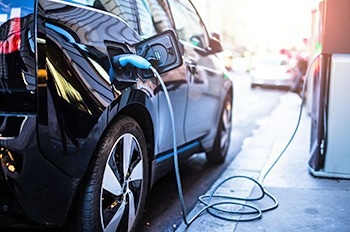
Blue electric vehicle and connector charging at a fast-charging station. Image Credit: Shutterstock/guteksk7
CHR GL.94 is an example of medium temperature (UL Class F & B) pressure-sensitive tapes that exhibit high adhesion and abrasion resistance.
When electronic shielding is required, products such as CHR C665 and h-old® SCUT.36 are well-suited options.
These products possess electrically conductive, conformable, and simple-to-apply features that effectively provide EMI/RFI shielding. By isolating components from radiating or leaking interference, they ensure reliable protection against such interference.
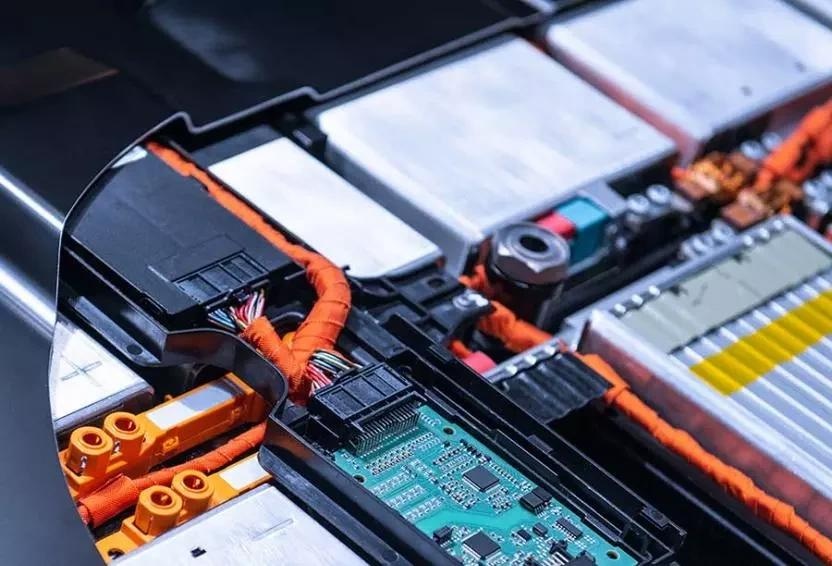
Image Credit: Saint-Gobain Tape Solutions
Enclosure Sealing Solutions
Because charging stations are often installed outdoors, it is essential that the housing materials can withstand various environmental conditions, such as weather, shock, extreme temperatures, dirt, and chemicals.
To protect the inside of the charging stations from water or dirt ingress and extreme temperatures, premium gasketing materials resistant to these harsh environmental influences are necessary.
The soft and lightweight silicone foams Norseal® F-15 and F-20 have exceptional flame resistance with low toxicity and smoke generation. They meet the highest flame rating of UL94 V-0, ensuring reliable and safe performance.
Norseal 515GF and 520GF materials offer the same advantages as silicone foam but in the form of a pressure-sensitive tape that is simple to apply.
Norseal FS1000 is a versatile material that combines superior water- and airtight sealing with exceptional conformability, resistance to UV radiation, dampening properties, and fire protection capabilities. These multifunctional features make it an excellent choice for challenging locations and future designs.
When it comes to sealing applications that require temperatures up to 70 °C, Norseal PS-V0 micro-cellular polyurethane foam is the perfect silicone-free alternative for advanced gasketing needs.
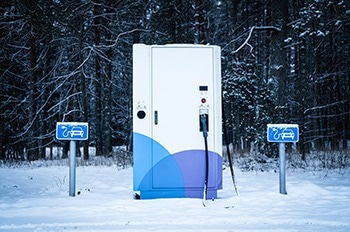
Snow-covered electric vehicle charging station during winter. Image Credit: Shutterstock/Crunchy Beans
Component Attachment and Lamination Solutions
Multifunctional adhesive tapes serve a dual purpose in manufacturing, simplifying the assembly process while also providing superior shock and vibration absorption, as well as robust weather resistance, all within a single product.
The tapes mentioned are suitable for attaching emblems, exterior elements, and structural components without fasteners. They offer quick-stick application, as well as strong adhesion to both silicone and low surface energy substrates.
Translink 80HS FR is an example of Acrylic Bonding Tapes that features a transparent, UL94 V-0 rated acrylic transfer adhesive, providing superior performance on materials with low surface energy.
Meanwhile, 8650 and 8822 Film Supported Transfer Adhesives are specifically formulated for bonding to silicone and other low surface energy materials.
NorBond® V2800 Series is an example of Polyurethane Bonding Tapes that utilize a black polyurethane foam substrate and a high-performance pressure-sensitive acrylic adhesive on both sides. This design enables the joint to dissipate energy and stress over the entire bond area.
Moving the Future Together
As the number of electric vehicles continues to rise, the global charging station network is expanding rapidly. This not only includes the charging of electric cars at home, apartments, workplaces, and commercial destinations but also at roadside and hotel locations.
Innovative solutions will be required to power electrified work fleets, public transport, industrial fleets, trucks, and marine vessels. Saint Gobain tapes are designed to address the challenges associated with this shift toward the future of transportation.

An electric sport car parked at a marina close to a charging station. Image Credit: Shutterstock/Patryk Kosmider
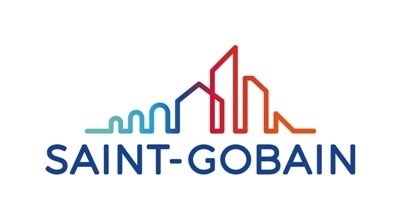
This information has been sourced, reviewed and adapted from materials provided by Saint-Gobain Tape Solutions.
For more information on this source, please visit Saint-Gobain Tape Solutions.